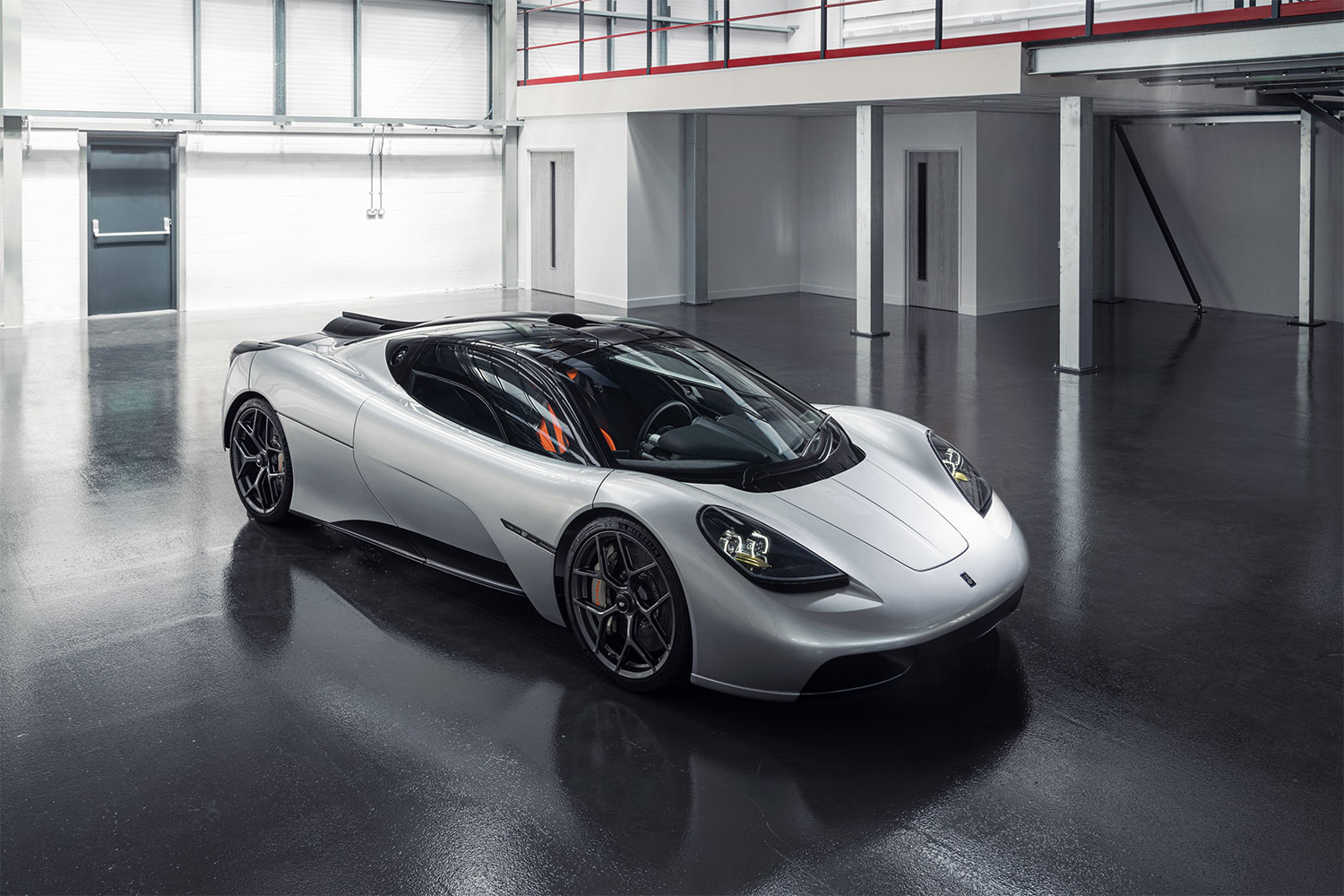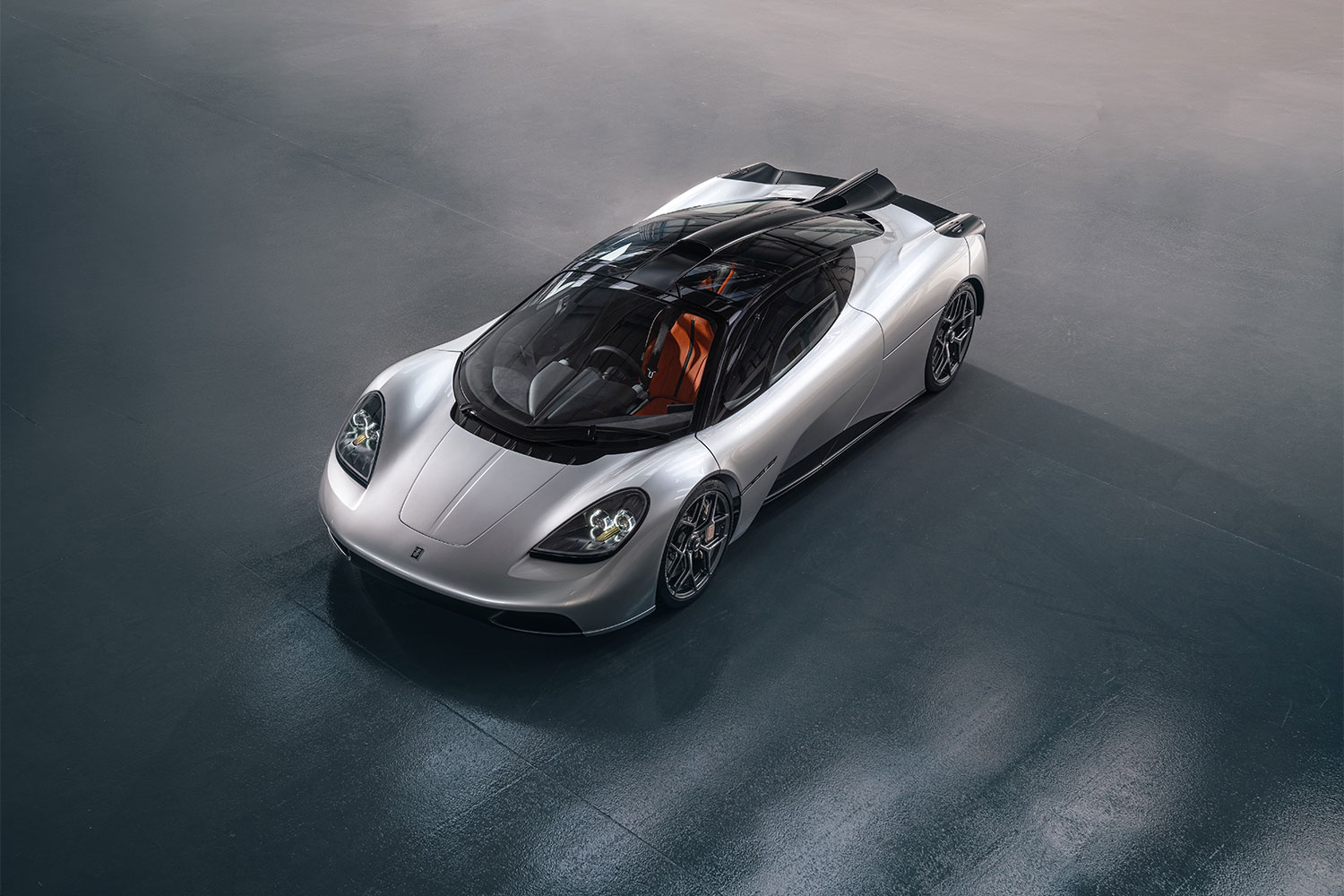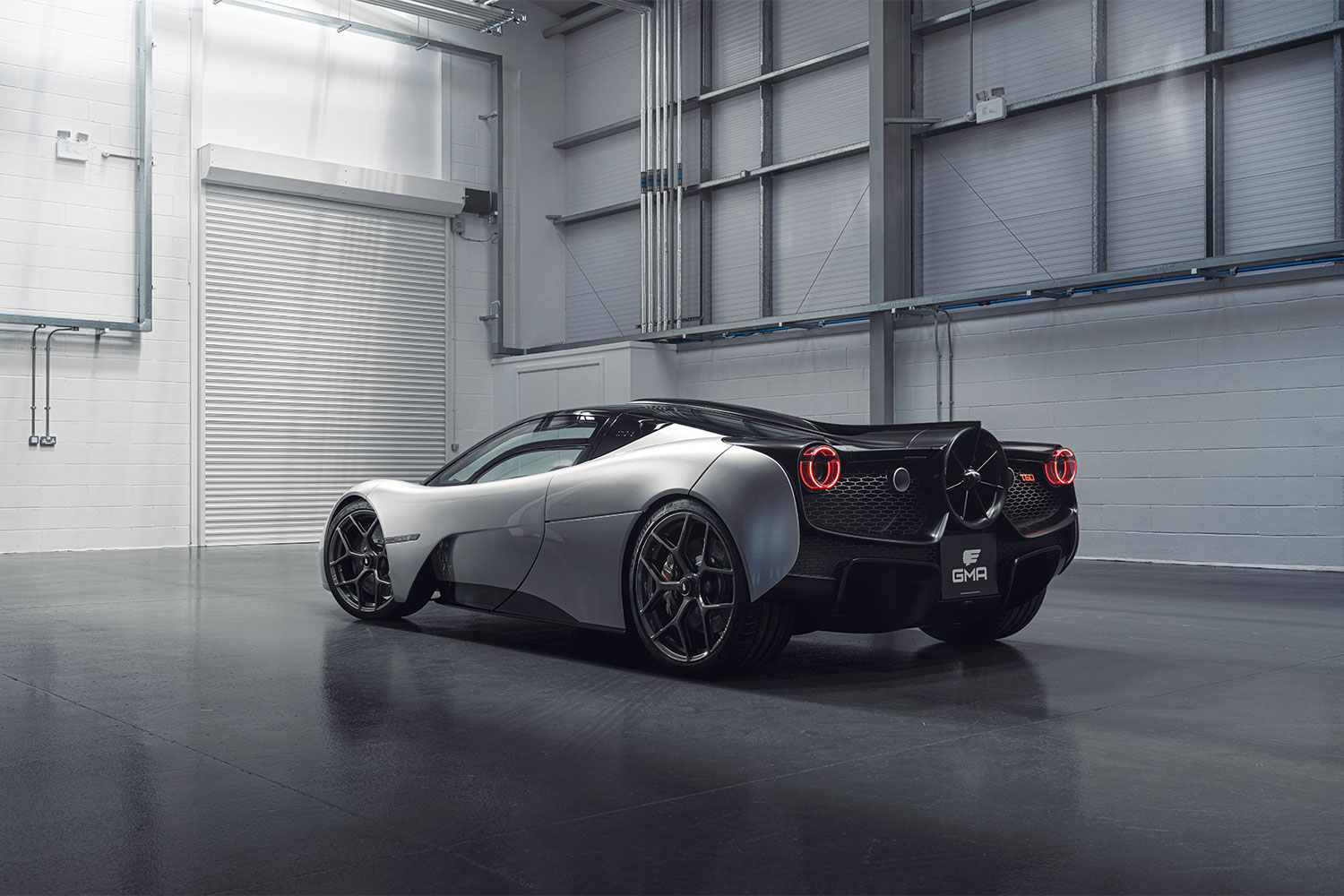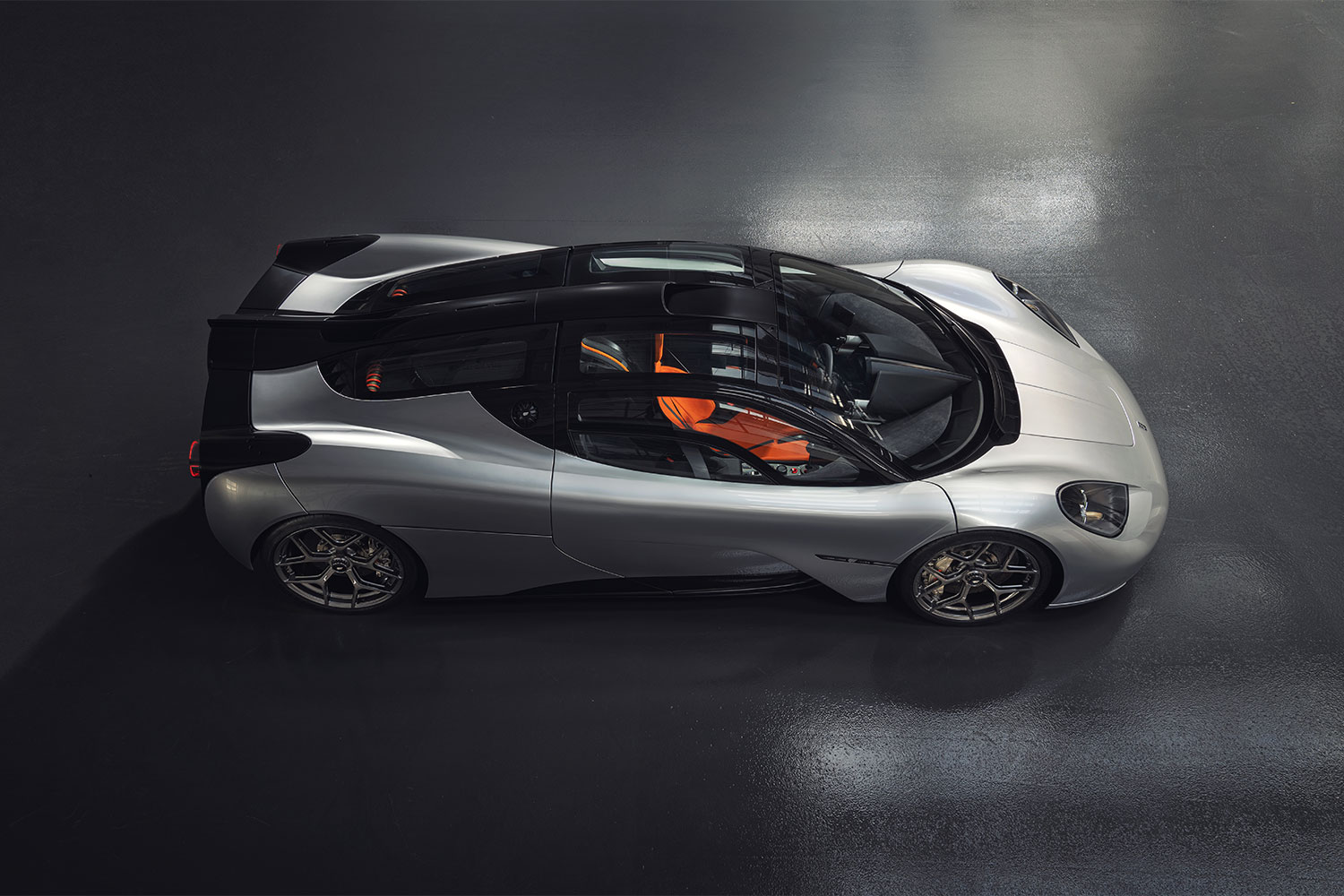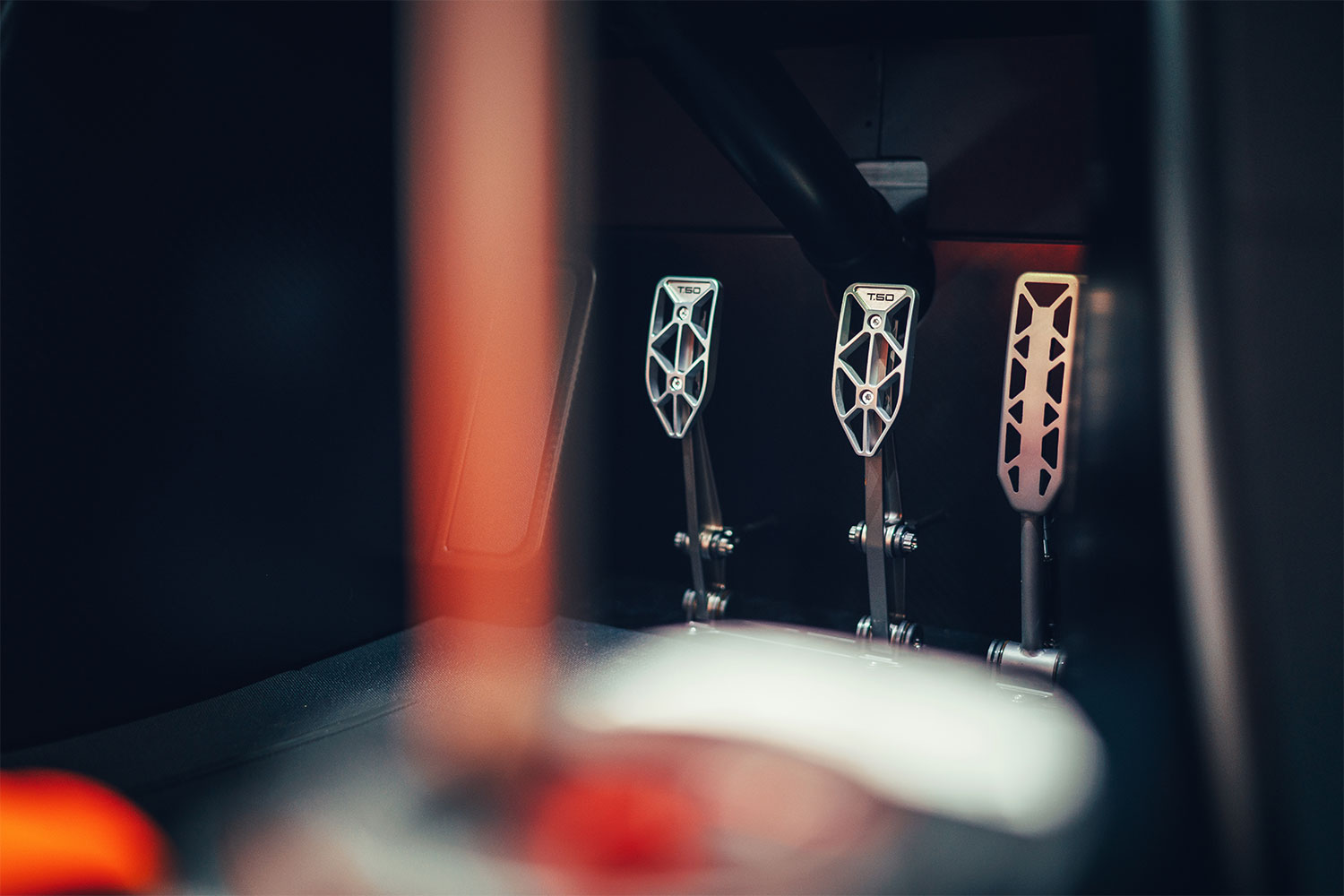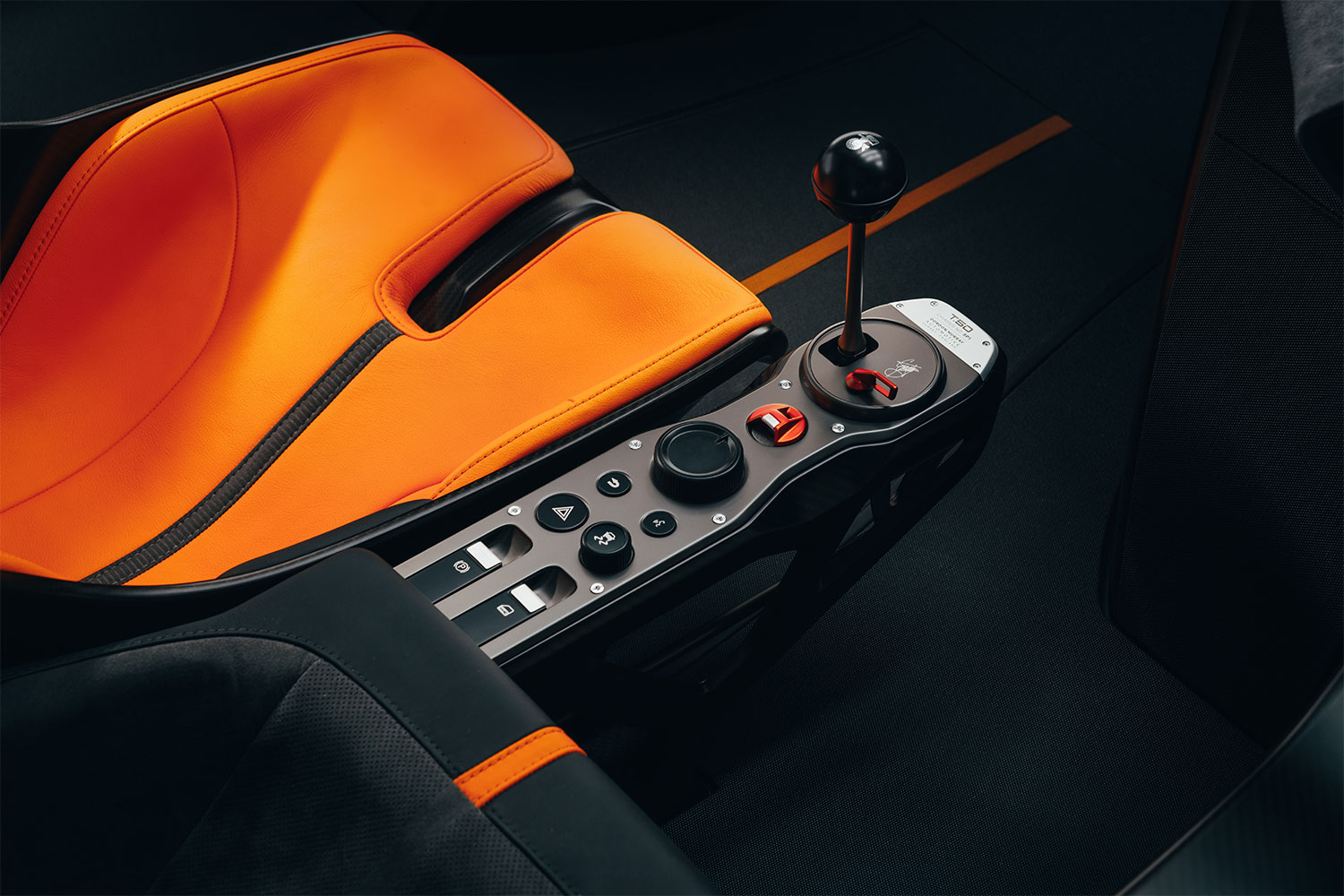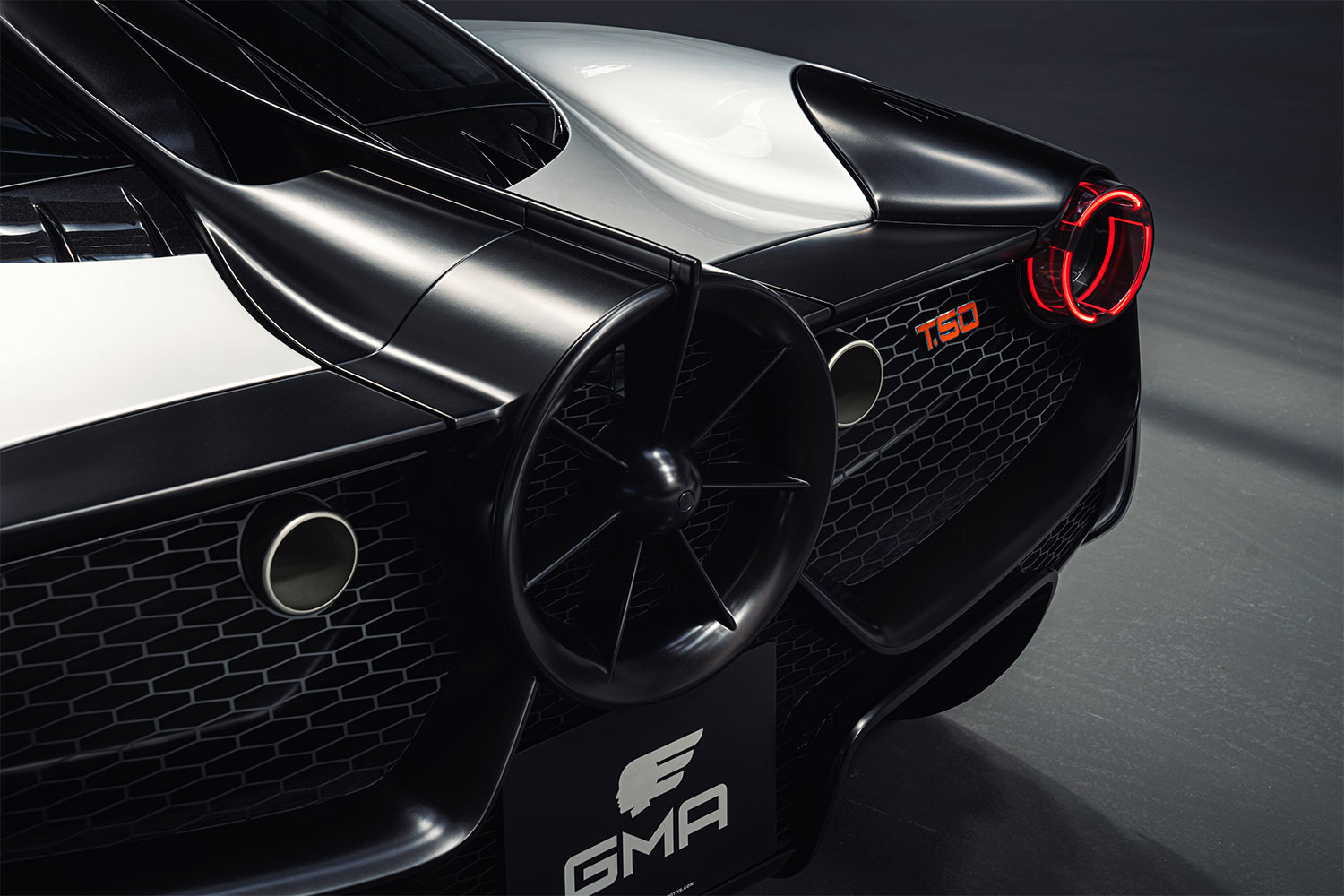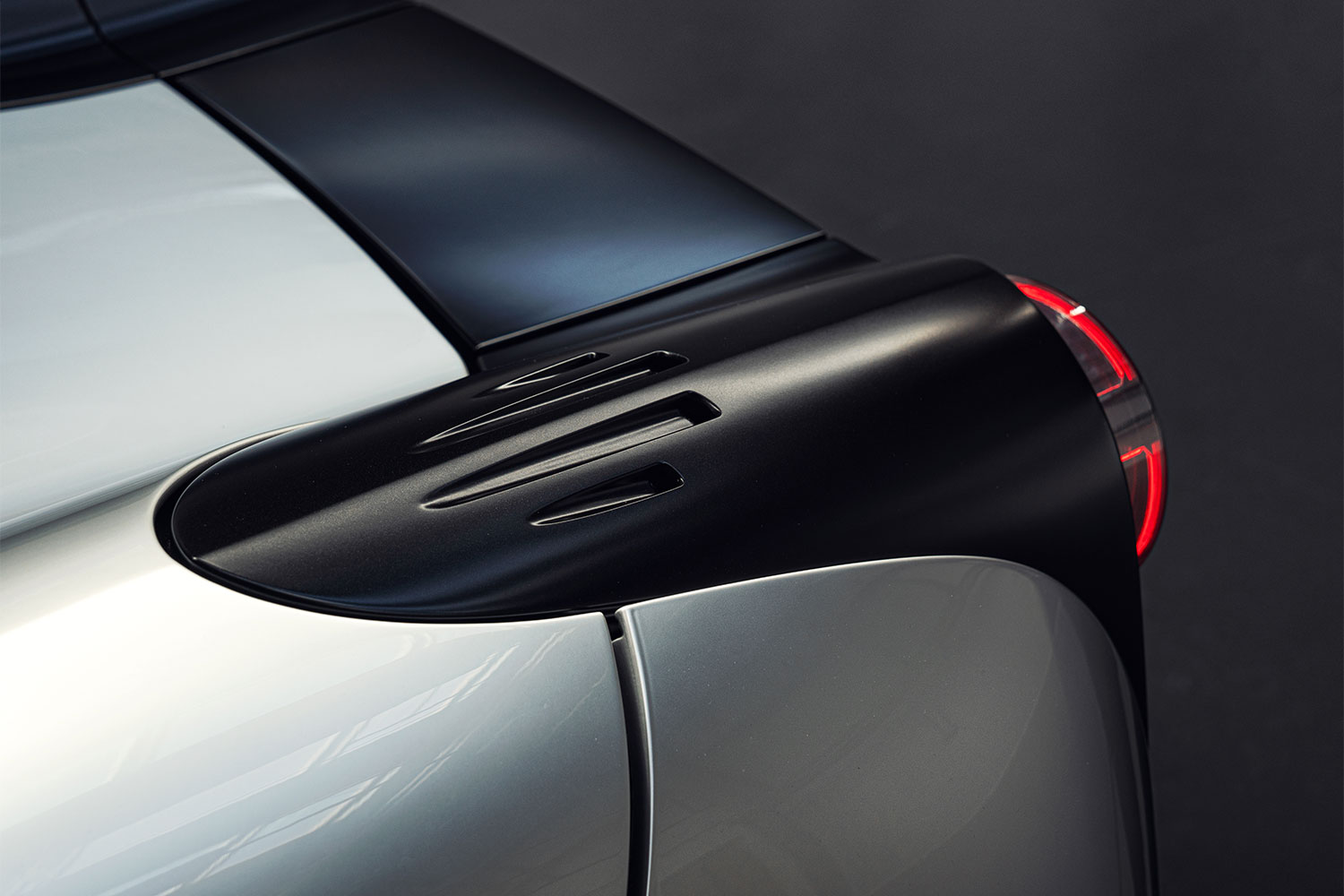The McLaren F1 is on a short list of contenders for being one of the best cars ever made. It was one of the few cars to have a central seating position for the driver, which was flanked by a passenger seat on each side, came equipped with a V12 engine from BMW, and featured a six-speed manual transmission. No one, not even McLaren, has been able to replicate the unique, 221-mph rocket. Until now that is. Gordon Murray, the designer of the original F1, has revealed the Gordon Murray Automotive T.50 hypercar and it looks like a modern take on the classic F1.
There’s no doubt that the T.50 is a hypercar. The specs say as much, but unlike the modern realm of hypercars like the McLaren P1, Ferrari LaFerrari, and Porsche 918 Spyder, the T.50 is one that takes inspiration from simpler times. Forget about complex, electrified powertrains, this hypercar doesn’t even have turbos. In that sense, the T.50 may just be the most driver-oriented hypercar on the road and if you only care about one multi-million-dollar car you’ll never see, it should be this one.
We could write a book about the T.50 because it has so many juicy details. Breaking things down into a more digestible manner, let’s start with the engine.
Power for the T.50 comes from a Cosworth-built 4.0-liter V12 that’s naturally aspirated and revs out to 12,100 rpm. Despite not having any turbos or any other type of assistance, the bespoke engine produces 654 horsepower and 344 pound-feet of torque. Those figures aren’t that crazy in a world where Dodge will sell you a Durango SRT Hellcat with 710 horsepower and 645 pound-feet of torque, but true drivers’ cars are rarely overly powerful beasts. The T.50 isn’t about setting top speed records, but prioritizes a raw feeling above all else. Plus, tipping the scales at roughly 2,174 pounds, it’s not like the V12 has a lot of weight to move around.
Keeping weight down was one of the key things with the T.50, which is why everything’s been put on an extreme diet. The engine weighs roughly 392 pounds, the six-speed manual transmission weighs 177 pounds, and the entire body, which includes the monocoque, weighs less than 330 pounds. Making major elements incredibly light and keeping the dimensions close to those of a Porsche 718 Cayman means the T.50 weighs nearly the same amount as a Mazda MX-5 Miata.
Then there’s the design. When it comes to hypercars, the T.50 is, dare we say, simplistic. No angry fangs or gaping scoops. It clearly looks like a modern take on the F1, which itself was elegant and purposeful. What you will find on the back is a 15.7-inch electric fan that can spin at speeds of up to 7,000 rpm to alter the car’s level of downforce. From a less drag mode for greater overall speed to one with the most downforce available, the nifty fan allows the T.50 to create hypercar levels of downforce without having ungainly wings.
For a hypercar, the T.50’s interior is elegant yet also simple. Too many hypercars try to mimic Formula One cars with odd button arrangements and overly complex gauges that require a personal IT manager to comprehend. That’s not the case with Murray’s hypercar, as it doesn’t come with any touchscreens. Instead, what you’ll find on the inside are simple buttons, dials, and switches in a driver-focused design. Just like the old F1, the T.50 has a three-seat layout with the driver’s seat in the center of the vehicle. Forget about asking your passenger to turn up the A/C.
Then, there’s the way the essential elements have been designed. The foot pedals, which are made out of solid aluminum, have holes for your shoes to physically latch on to instead of grips. The circular, cue-ball-like gear knob is made out of titanium. These items may not be as aesthetically beautiful as ones you’ll find in a Pagani, but there’s a harmonious simplicity to them that really makes them look like they’ve been designed with the driver in mind.
The simple three-spoke steering wheel is a further reminder of that. Take a gander at one of Ferrari’s steering wheels and you’ll find turn signals, windshield wipers, vehicle settings, suspension settings, and a start/stop button all packed into one area. There’s none of that nonsense here, as there’s a rotary selector for the infotainment system, a driving mode selector, and a start/stop button.
As one would expect, the T.50 is an incredibly limited vehicle with only 100 units expected to be built at roughly $3 million apiece. So, yes, this is another hypercar for the ultra-rich. It’s also very unlikely that the people that can afford this machine will ever use it on the road and instead, will stuff it away into a garage with other priceless cars until it skyrockets in value. But, even if you’re like me and have become cynical toward hypercars, the T.50 is one to truly care about.
Emissions and safety regulations mean automakers are having to get creative with designs and powertrains. The Holy Trinity (P1, LaFerrari, and 918 Spyder) were supposed to be a look at the future of hypercars with current technology. The T.50 is slightly different, because it’s the best of everything from the past. Light, small, a screaming naturally aspirated V12 engine, a manual transmission, downforce through engineering, and minimal technology.
The McLaren F1 was a poster car for millions of enthusiasts well after it launched as a reminder of what was possible in the ’90s. The new T.50 will do the same thing, but for millions of future enthusiasts as a reminder of what hypercars were once like before electric vehicles, hybrids, and autonomous vehicles. This is the pinnacle of automotive engineering in 2020.
